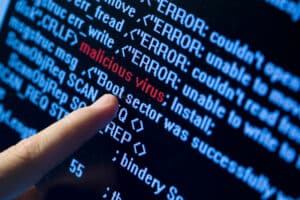When the time comes to dive more deeply into the Python language, when you want to create more intricate code, you will need to understand the full range of parts that make up the language and which give it its power.
But before diving too far, let’s consider what you need to know at the basic level.
What you need to have mastered – the basics of Python
There are 7 areas that need to be fully understood:-
Python Syntax
Conditionals
Loops in Python
Python Functions
The Lists and dictionaries used
Object and classes
Python Files
Note: The best way to learn how these elements work together is by developing your own project. This will allow you to apply what you have learnt, whilst gaining more knowledge through exploration, and also by understanding what works and what does not. The added benefit of this method is that you will have built up a library to show to prospective employers.
Python Basics
Syntax
Syntax is a basic part of learning Python, this is because it is how the structure of the programming language is defined. Basically syntax is the grammar and spelling of the language and is very similar to English.
Syntax has the following topics:
Python Variables
Data types
Printing instructions for the console
Arithmetical operators
Comments which allow you to sprinkle explanations in the body of the code
Python Conditionals
Conditionals are all about helping to control the flow of a program. For instance, they are used to inform a program to run a piece of code when a condition is reached.
Loops
These are known as sub-routines in other languages, as they allow the programmer to create a block of code that can be used over and over again, sometimes a set number of times.
Functions
These are an important part of the language, as once created, they reduce the need to write the same piece of code over and over again.
One example is to create a function that takes two numbers and adds them together.
You will need to understand how functions work:-
The difference between Formal and Actual parameters
The difference between User-built functions and system functions
The method of importing libraries
Lists and Dictionaries
Next on the list of things to do, is that of list and dictionaries.
Lists are used to store collections of information as a single variable, the items in the list being similar to each other.
Examples are a list that holds all the dresses a clothing store sells or all the suppliers to a farm shop.
Lists are an easy way to hold types of data / information in one place, this allowing for faster changes to be made later on.
Dictionaries have a similar job to do as they allow the programmer to store data with keys and values.
Objects and Classes
Python is an object-oriented programming language, with Classes being blueprints for objects, these defining how objects are structured and what types of data each may store.
Objects on the other hand, are individual instances of a certain class.
Files
Files are used in all Python programs as they allow programmers to hold and retrieve data and information.
When you have understood these basics you should move onto your first project.
To help, here as some ideas.
A tool that predicts the price of every cryptocurrency
A website that lists the top films for a range of years
A tool that allows you to track what you eat
Once you have created a Python project like this you can move onto a more advanced one.
As a first step it could be better to add a new ‘advanced feature’ to one of your initial ‘simple’ projects, thus making them more technically interesting to any viewer.
But in what ways could you alter an existing project?
Perhaps you could enhance the efficiency of the program?
Then again you could add some new features to make it more useful?
It may also be possible to use external data sources to enhance the project’s functionality?
But then again, the most effortless way to learn Python is to be trained by an expert instructor and here I suggest you check out the range of Python Training Courses provided by Framework Training.
Read more:
The Elements of Python
















